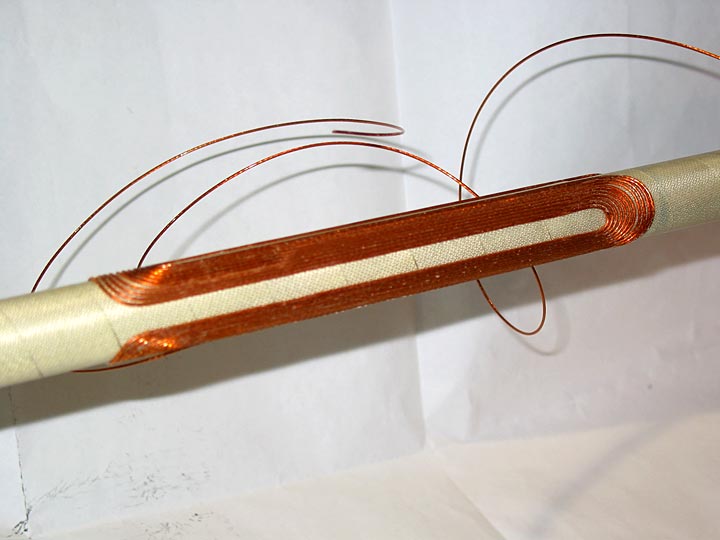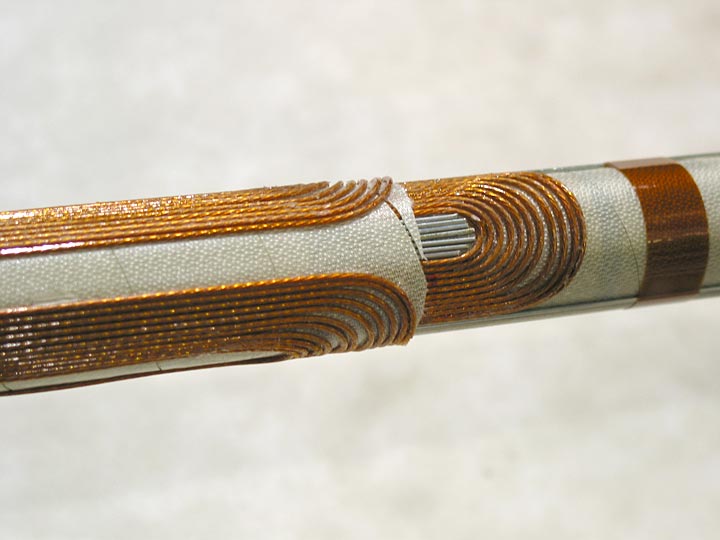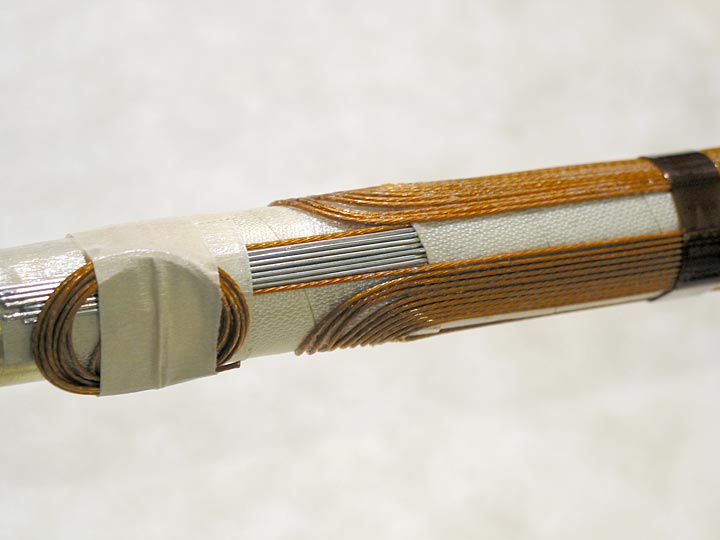Linear Collider Final Focus Magnet Construction
Superconducting Cable Winding Tests
To increase the transfer function, a 6 around 1 cable was next used. This cable is more efficient because it allows the packing of more conductor within the volume surrounding the support tube. This also lowers the inductance of the coil, making quench protection easier, but requires a higher operating current. Traded off is the minimum radius of curvature that can be tolerated by the bonding process as well as the insulation integrity.
For this test, the first layer was designed for a length of 8 inches, and the second layer is 6 inches long. The lengths were chosen to allow inspection of the different features which were designed in.
The pole spacers on the first layer for this test were chosen to be solid copper wire, instead of the standard G-10 spacer. The copper allows for a higher heat conductivity path from the pole to the ends of the magnet.

Figure 13 is the first layer of the next design, a two layer 6 around 1 cable bonded to the 1 inch diameter tube. The 6 around 1 cable has a higher conductor density by virtue of eliminating the individual conductor insulation. This change provides a higher transfer function and quad field gradient.

Figure 14 shows both layers at the non lead end.

Figure 15 shows the lead end. Note that the serpentine pattern allows the copper wire pole spacers to run from one end of the magnet to the other continuously, with only a vertical jog as the wire climbs over the end wires of the pole, while not using up any radial spacing. This feature also allows other windings on the tube to pass the conductors through the coil pattern without the radial buildup penalty.


